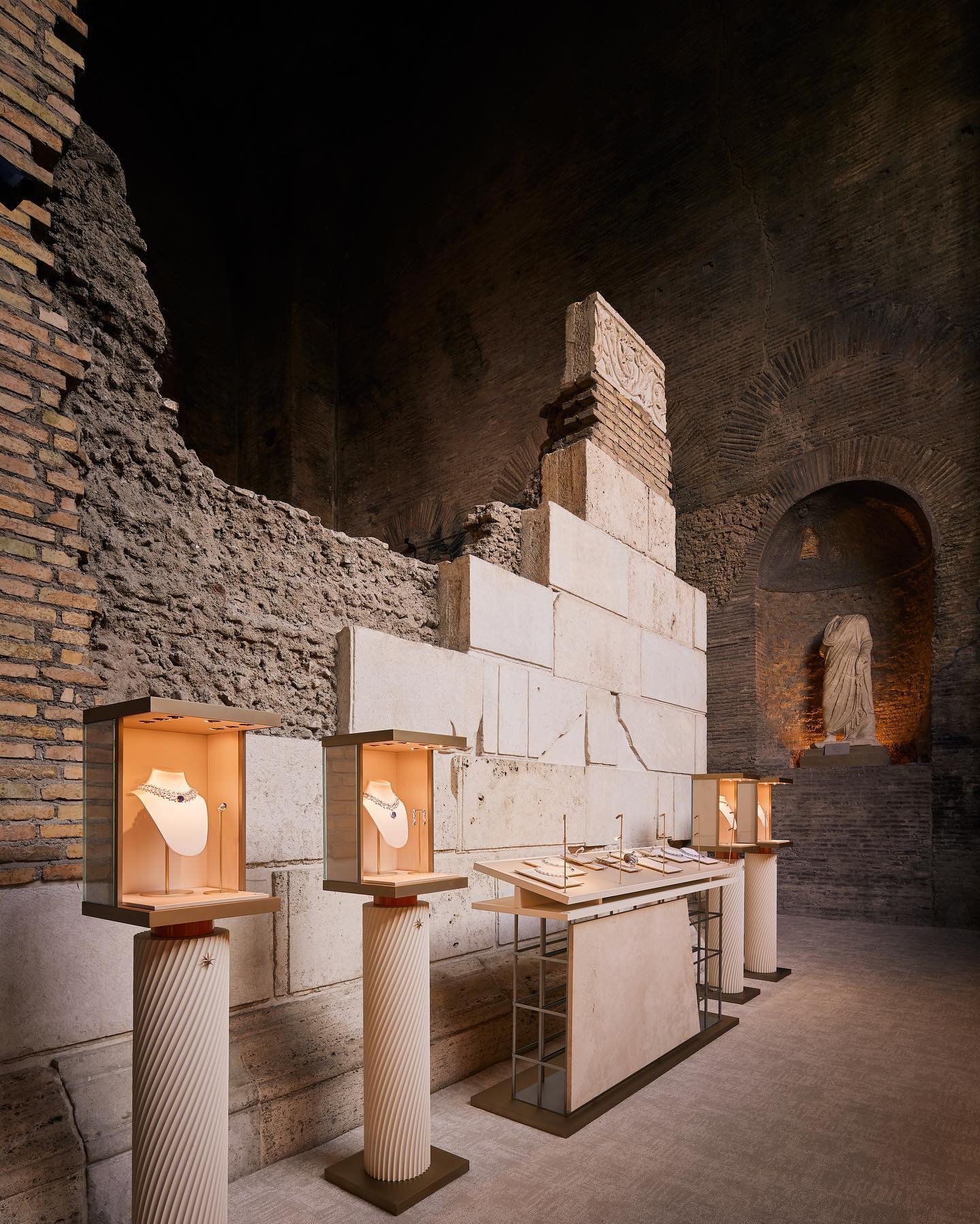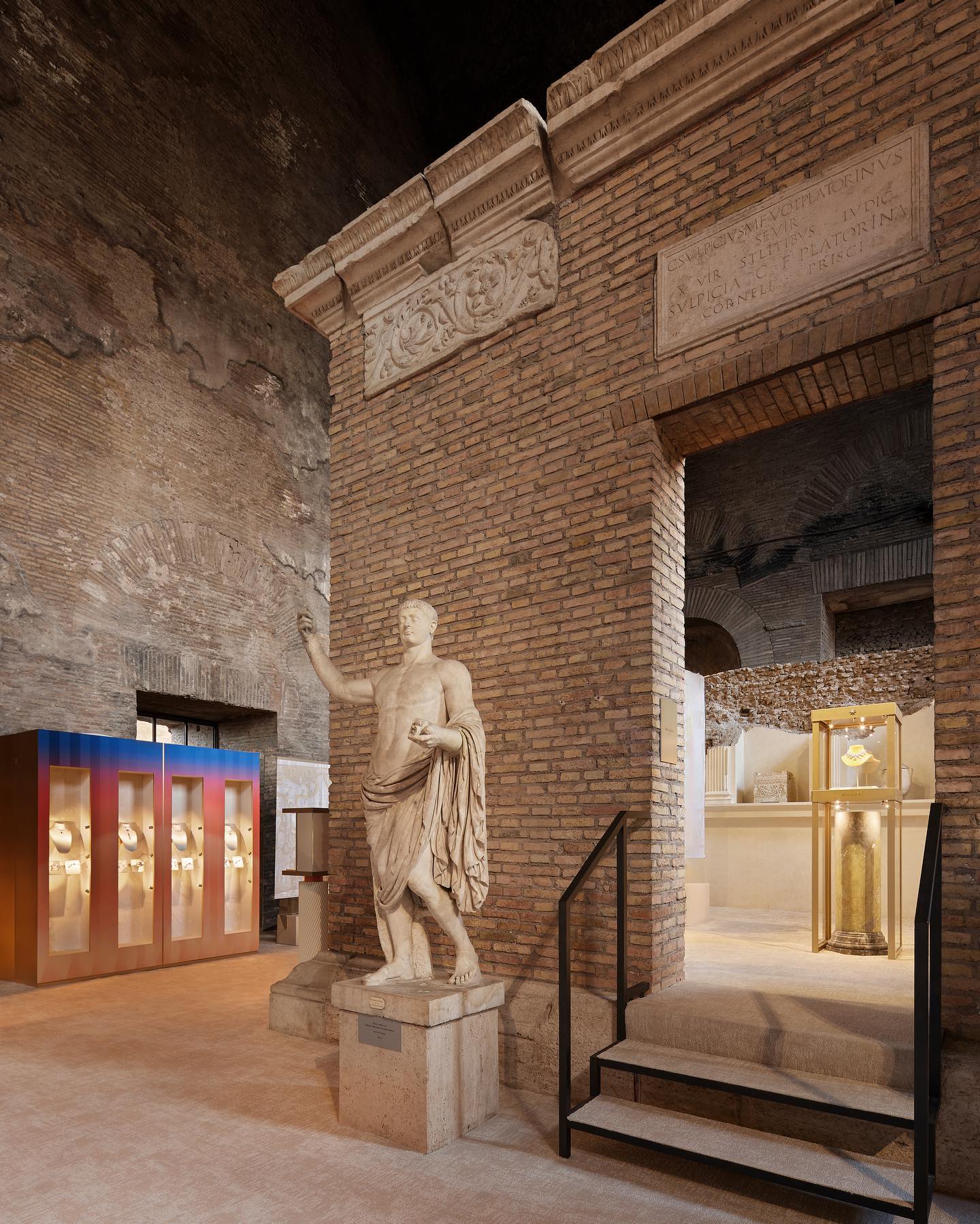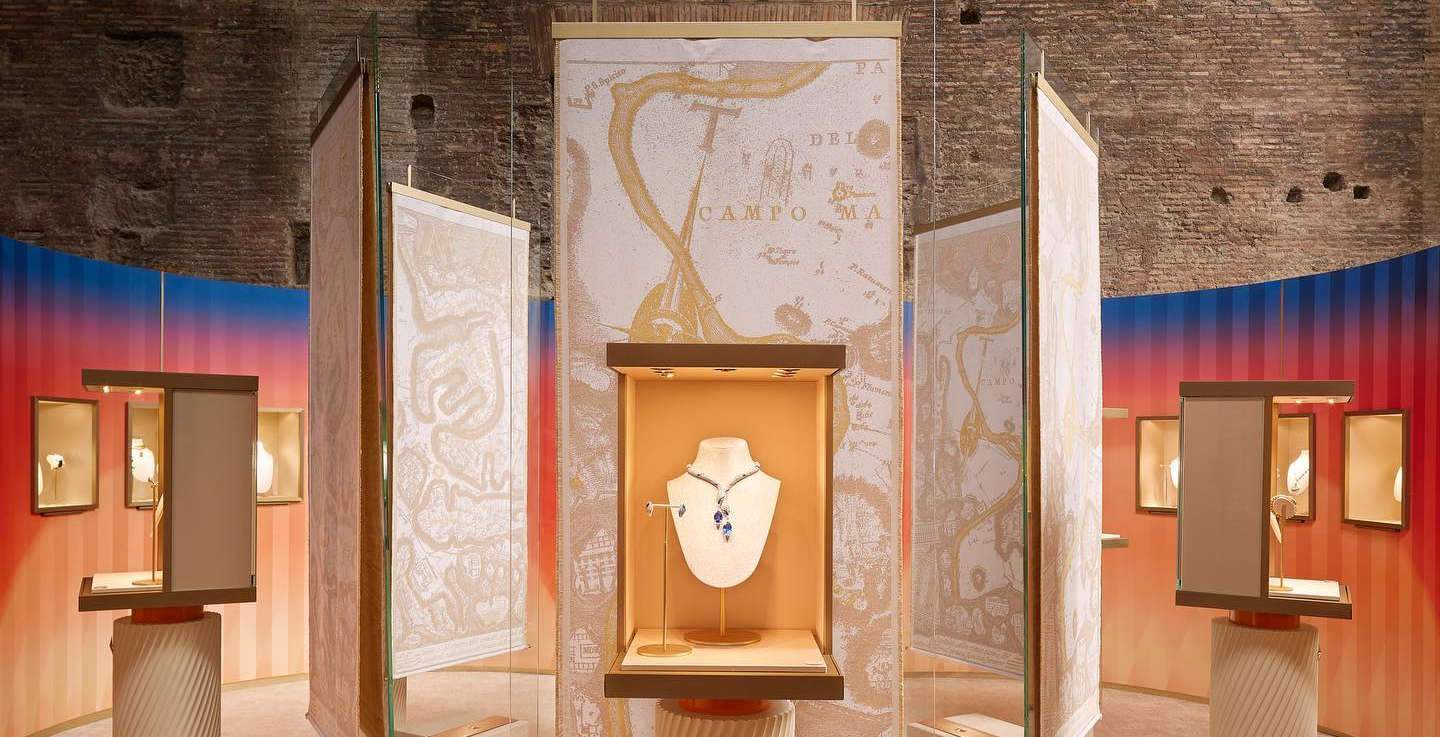For the past couple of weeks, and precisely since May 10, the website of the National Roman Museum has been informing about a lengthy closure of some rooms in the Baths of Diocletian: rooms VIII, IX, X, XI and XI bis (which are among the most significant large halls of the ancient thermal complex) are precluded from visiting from May 17 to June 1, a closure that also entails a reduction on the cost of the ticket. No information on the reasons for the closure released by the museum: in fact, nowhere does the institution say that the rooms are being used for an event by the Bulgari fashion house, which has rented the Baths of Diocletian for an event celebrating 140 years of the Aeterna jewelry collection. During the parade of celebrities who, the day before yesterday, enlivened the highlight of Bulgari’s party, which was set to last for a few days (spotted, among others, Anne Hathaway, Isabella Rossellini, Carla Bruni, and Elisa, who also performed), the most expensive piece of jewelry ever developed by the company, the Serpenti Aeterna necklace, worn for the occasion by Indian actress Priyanka Chopra Jonas, was also shown.
Cost of the operation: 1.5 million euros, which Bulgari paid to the National Roman Museum in order to organize the initiative in its spaces. Despite the amount, however, the closure has aroused discontent in the cultural heritage environment, partly because of the duration of the closures, two weeks without the public being able to visit a relevant part of the thermal complex, and partly because of the lack of information from the museum, which did not write half a line to communicate that the closures were due to Bulgari’s event. And mostly because everyone complains that an essential public service (such museums were made by law in 2015) was closed to the public for a commercial event.



Among the first to denounce what happened is the USB - Unione Sindacale di Base union , which speaks of “improper use” of the Baths of Diocletian. “We ask how is it possible,” the union asks, “that the Executive has consented to the invasion of a museum by a business that wants a prestigious venue as a showcase to sell its luxury products. How is it that a state museum is considered an essential service and cannot be closed because of a strike, but it can be closed for money and private profit? All this is to the detriment not only of tourists and visitors but also of the staff who face too high a workload, given the unmanageable situation that does not guarantee the protection of property and the safety of the sites. We know that MiC employees expressed several concerns in the course of defining the organization and agreements with Bulgari. Concerns that increased once they learned of 3 more evenings, including parades, dinners and shows, because the Ministry of Defense did not grant, rightly in our opinion, the use of the Vittoriano spaces for commercial purposes.”
The USB also wonders why, if the use of the Vittoriano was not deemed consonant, then the venue of the Baths of Diocletian should be consonant: “We are talking about a museum that had to deal at the last moment with double the load of people, instruments and events despite the fact that it was in great difficulty to remain open already with the other evenings provided for in the 2024 valorization plan.” “It is clear,” the union concludes, “that we are in the era of bullying and abuse of power, and these are further confirmations of the tracotence of political and economic power Museums and culture are now hostages of the powerful and private individuals to make cash: the message of culture is threatened and nullified for Bulgari’s profits.”
“The news,” the Mi Riconosci association notes instead, “began to circulate late, just as late as the reason for the closure was learned: a private event behind closed doors and armored by the Bulgari maison. Those who attempted to visit the museum these days unexpectedly found themselves in front of cables and piles of materials, with the possibility of accessing only the epigraphic section, at the reduced cost of 6 instead of the canonical 8 euros.” It was learned of this closure, initially, only through the Instagram accounts of Bulgari, magazines and personalities related to the world of fashion: “exclusive dinners and shows for very rich guests and VIPs,” they let the association know, “who can admire the jewels of the new collection closed in heavy showcases placed between the ancient statues that on the contrary have no protection.” Mi Riconosci also laments the museum’s silence : an institution, the association comments, has an obligation to communicate what is happening in our spaces and at what cost, ensuring transparency in the management of places intended for public use. Moreover, the museum communicated the amount received from Bulgari, the association recalls, only after being asked. The association also criticizes the sum: “A figure that sounds bombastic but in fact insignificant expense when compared to the overall amount (workers, catering, testimonials...) and especially to the enormous profit that the exhibition of the new collection for the 140th anniversary of the maison with the most expensive pieces ever produced will bring.”
The association also raises practical problems: “We wonder how the security and preservation of the museum collection is guaranteed and what logic guides the acquisition of money from private individuals, perhaps intended for the protection and restoration of the monument, if then those same private individuals rather cause damage to the spaces and objects that are to be restored. What are the conditions of those working inside the Museum these days? What are the conditions of usability for those who bought tickets and visits months before and find the museum suddenly largely closed?”
What is happening at the Baths Museum, Mi Riconosci concludes, “may constitute a dangerous step forward on the road to privatization of public spaces, as well as stand in absolute dissonance and against the trend of what a museum should be, a public service, accessible and inclusive.”
 |
| Rome, Baths of Diocletian closed to public for Bulgari |
Warning: the translation into English of the original Italian article was created using automatic tools. We undertake to review all articles, but we do not guarantee the total absence of inaccuracies in the translation due to the program. You can find the original by clicking on the ITA button. If you find any mistake,please contact us.